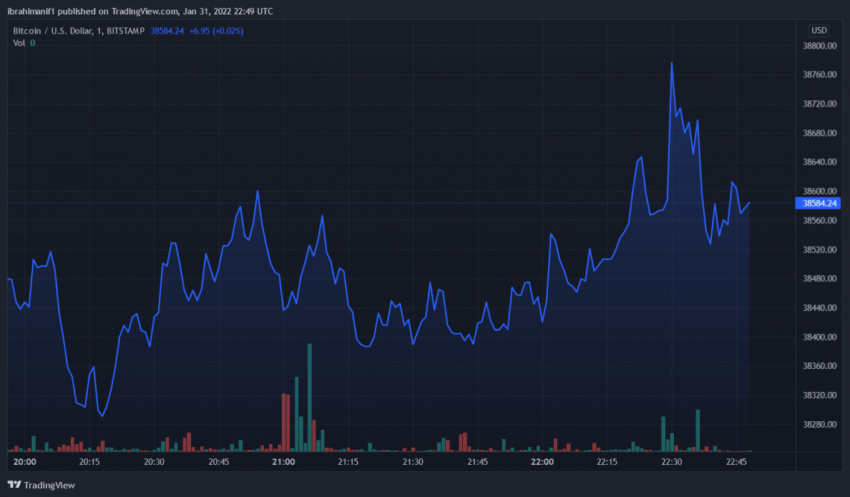Finance Minister Nirmala Sitharaman made some much-awaited announcements about income from crypto transactions in the Union Budget 2022-23 presented on February 1, 2022. As per the budget proposals, the government intends to levy a flat 30% tax on profits earned on crypto transactions. This is irrespective of the income tax slab applicable to a person. The government has also proposed to levy 1% TDS for payment transfers involving cryptocurrencies. The government has also announced its decision to introduce a central bank digital coin (CBDC) in the next fiscal.
Unlike the crypto bill that the government had listed in the winter session, the proposals made in the latest budget deal with the legality of cryptocurrencies and the launch of official digital coins separately. Separating the launch of CBDC from the larger question of crypto’s status is a remarkable breakthrough for the government. CBDC being an RBI product will invoke protectionist sentiments from the government quarters while crypto is a technological novelty that’s hard to resist. However, the idea to separate these two aspects of the crypto debate emerged during a meeting chaired by the Prime Minister when the government tried to find a way out of a highly polarized opinion between senior government officials and crypto industry representatives.
The budget proposals have brought cryptocurrencies into the tax net without getting into the controversial question of whether these new-age currencies are legal or not. Nevertheless, the proposals, de facto, offer legitimacy to digital coins. For the moment, the government has avoided stating its stand on crypto in clear terms. The reason for providing the tax regime, according to the government, seems to be the growing volume and value of transactions involving cryptocurrencies. Finance minister Nirmala Sitharaman said, “There has been a phenomenal increase in transactions in virtual digital assets. The magnitude and frequency of these transactions have made it imperative to provide for a specific tax regime.”
As for the decision to introduce CBDC in the next fiscal, the government thinks it will give a “big boost” to the local economy. The finance minister said, “Digital currency will also lead to a more efficient and cheaper currency management system.” Bringing CBDC will definitely have its benefits in the way currencies are produced and managed. By making money available in the digital form where those who own the money can do the transactions including deposits and withdrawals, the monetary system will see an easing of traffic. Over the period, it can also lead to an easier and cheaper international payments system, making remittances cheaper and faster.
However, these are much-discussed and well-understood benefits of CBDC, which is nothing but an official currency in the digital form. It doesn’t bring any other benefits of cryptocurrencies such as anonymity and lack of regulation and control. At the core of cryptocurrency is the idea of freedom from the central bank and the governments, which have failed to control inflation and preserve the value of money.
The government has done a good thing to wriggle out of this complex situation. But, it can’t relax just yet. Providing a tax regime for the crypto sector is the beginning of regulating a financial sector that’s evolving and opening up in new forms every day. For the authorities to effectively tax the profits from crypto transactions, they will have to keep a close watch on all that’s happening in this space. Over the last few months, the government has said many times that it doesn’t collect information about the crypto trade, exchanges, investors, or the amount of money invested.
One of the reasons why the government doesn’t do so is it’s a difficult task. Digital coins are like all digital products are free from the barriers of geographies. An Indian investor can invest in a digital asset that is outside the jurisdiction of the Indian tax authorities. The proposals in the budget 2022-23 lay down that the tax will be applicable if the crypto money is converted into Indian currency. But if it’s not converted into Indian currency, it can stay outside the tax net. One of the reasons why China has banned cryptocurrencies is the flight of capital. It can be massive and no one would know the exact amount or extent
So, for the Indian government, the new tax proposed for the crypto sector is just the beginning to fully regulate it. For governments around the world, it is of critical importance to match the edge and supremacy of cryptocurrencies with sophisticated policies and tech prowess. There is no other way but to take the bull by the horns!
Cryptocurrencies are nothing but software that is hosted on a network of computers whose access is secured by a stringent protocol of encryption. It promises efficiency and smart solutions in the field of money and finance. If the governments can’t beat these networks for their ability to stay beyond any surveillance, the governments can definitely try to match their efficiency and smartness. And if they use blockchain technology or a few digital coins of their own, they can very well wrest the initiative from the makers of Bitcoin, Ethereum, Cardano, Solana, Dogecoin. After all, cryptocurrencies are only a decade old as of now.
The traditional concept of money has not changed at all in at least the last 100 years while the money itself has seen a drastic fall in value over the period. Can thousands of songs of Lata Mangeskar, for example, whose popularity or value among the fans has not declined over the years be considered money? That’s exactly the question. And we seem to be entering an era of competitive money where people may have a choice to accept the signature of a government-appointed Governor or the voice of Lata as the money.
Indian Finance Minister Sitharaman should continue to wear her trademark crispiness — in her sari, speech, and the money she would want the Indians to use. (IPA Service)

 BJP Leaders Finding It Tough To Push 80 Per Cent Plea In Uttar Pradesh
BJP Leaders Finding It Tough To Push 80 Per Cent Plea In Uttar Pradesh 